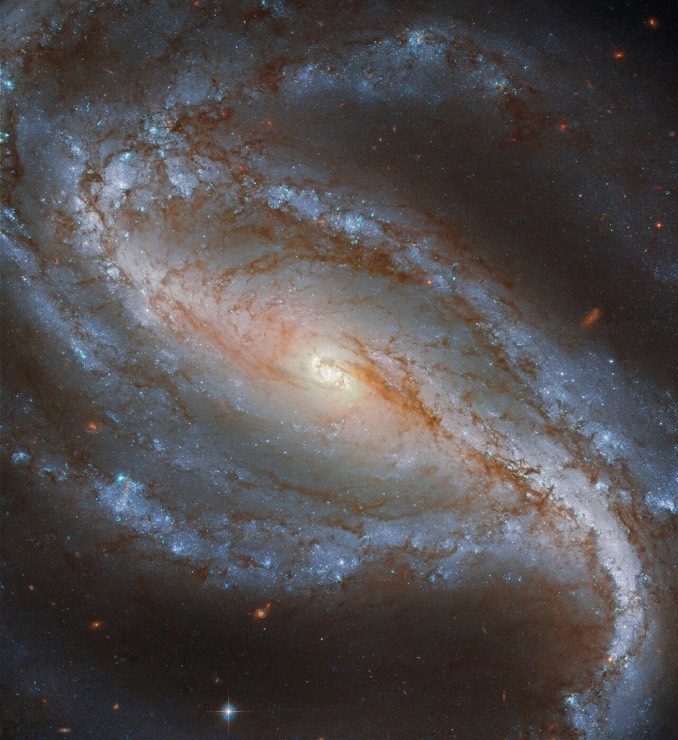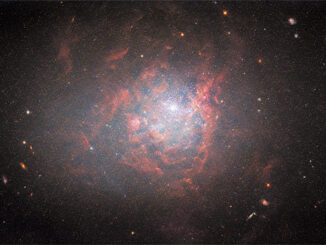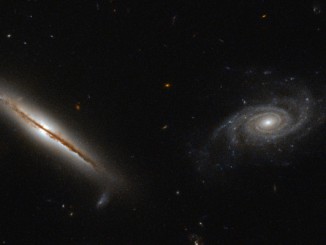About two thirds of spiral galaxies, including the Milky Way, feature a central bar of stars and long arms spiralling loosely around the nucleus. NGC 613, discovered in 1798 by William Hershel, provides a textbook example as seen in this beautifully detailed image captured by the Hubble Space Telescope and released 11 January. NGC 613 is located about 67 million light years from Earth in the southern constellation Sculptor.




